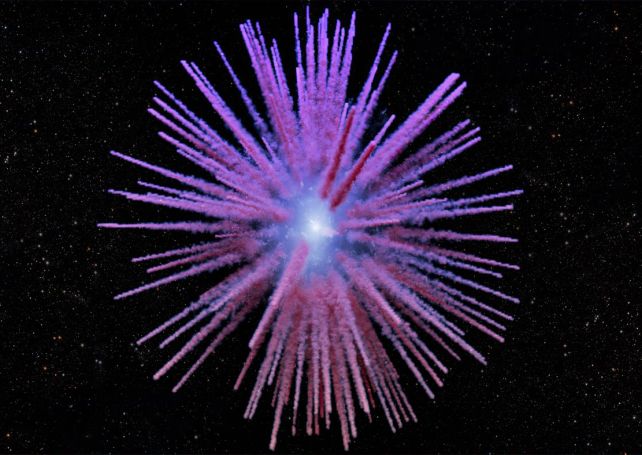Within the 12 months 1181 CE, the sky exploded.
Nicely, part of the sky – a pinprick of nothing out of the blue blossoming into visibility, a brand new, non permanent ‘visitor star’ within the constellation of Cassiopeia that astronomers in China and Japan watched and recorded for months.
That star was a supernova, the violent eruption as a lifeless white dwarf star accrued a lot mass from a binary companion that it exceeded important mass and blew its stack. It is one among vanishingly few such recorded occasions in human historical past, a vital laboratory for attempting to know the way in which supernova remnants evolve over time.
Nonetheless, the fabric ejected by the white dwarf wasn’t to be found till 2013, increasing away from the positioning of the supernova in a spherical configuration, a supernova remnant named Pa 30. In 2023, astronomers found faint, skinny filaments contained in the sphere, like spokes connecting the ejecta to the white dwarf within the middle.
Now, these filaments have been mapped, and their velocity measured, with the Keck Cosmic Net Imager (KCWI), giving us a brand new, three-dimensional map of the supernova remnants nonetheless blasting out into area, like the top of a dandelion gone to seed.
frameborder=”0″ enable=”accelerometer; autoplay; clipboard-write; encrypted-media; gyroscope; picture-in-picture; web-share” referrerpolicy=”strict-origin-when-cross-origin” allowfullscreen>
“A typical picture of the supernova remnant can be like a static picture of a fireworks show,” says physicist Christopher Martin of Caltech. “KCWI provides us one thing extra like a ‘film’ since we will measure the movement of the explosion’s embers as they streak outward from the central explosion.”
The supernova of 1181 CE, named SN 1181, is a rarity even amongst supernovae. In Sort Ia supernovae, a white dwarf slurps up an excessive amount of matter, exceeds the important mass restrict, and explodes with sufficient vitality to destroy the star. However there’s nonetheless a white dwarf on the middle of Pa 30.
The Sort Ia supernovae that go away behind a ‘zombie’ star are often called Sort Iax, and that is what we’re with SN 1181. Astronomers imagine that the occasion was not a typical mass switch to a white dwarf from a binary companion, however a merger between two white dwarfs, in order that’s fairly neat.
Led by astronomer Tim Cunningham of the Harvard & Smithsonian Heart for Astrophysics, a staff of scientists used the KCWI instrument on the Keck Observatory in Hawaii to map the supernova remnant intimately. An correct map of what Pa 30 is doing now will help astronomers reconstruct what it was like up to now.
The important thing to that is the way in which gentle adjustments when its supply is shifting. If a clump of matter is shifting in the direction of us, the wavelength of the sunshine it emits is barely smooshed in the direction of the shorter, bluer finish of the spectrum; and lightweight from an object shifting away is stretched in the direction of the redder finish. Astronomers can research the quantity of smooshing and stretching and use it to determine how briskly one thing is shifting via area.
This allowed Cunningham and his staff to calculate the pace of the SN 1181 ejecta. They decided that the fabric is increasing at a charge of about 1,000 kilometers (620 miles) per second. And that piece of the puzzle allowed them to rewind the explosion to when it occurred.
“We discover the fabric within the filaments is increasing ballistically,” says Cunningham. “Which means that the fabric has not been slowed down nor sped up for the reason that explosion. From the measured velocities, wanting again in time, you may pinpoint the explosion to virtually precisely the 12 months 1181.”
That appears to clinch the connection between SN 1181 and Pa 30. However the analysis additionally revealed some new mysteries to unravel.

The research discovered proof of a robust asymmetry in Pa 30 alongside our line of sight. This hints that the supernova explosion itself was asymmetrical. And there is a massive cavity within the middle of the remnant, across the zombie star within the middle. It is also unclear how the filaments themselves fashioned, after the explosion occurred.
“A reverse shock wave could also be condensing surrounding mud into filaments, however we do not know but,” says Cunningham. “The morphology of this object could be very unusual and engaging.”
The research has been revealed in The Astrophysical Journal Letters.





